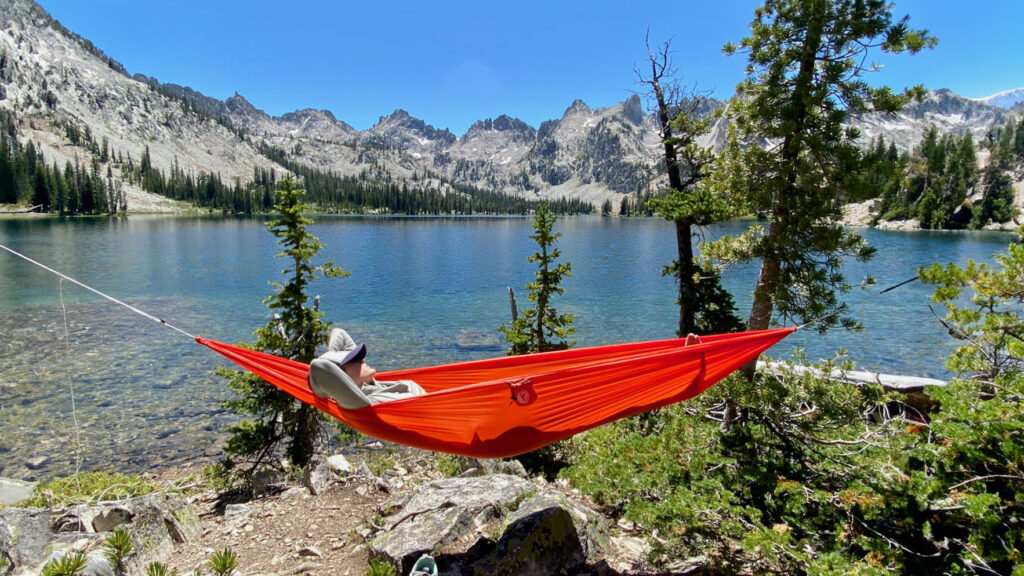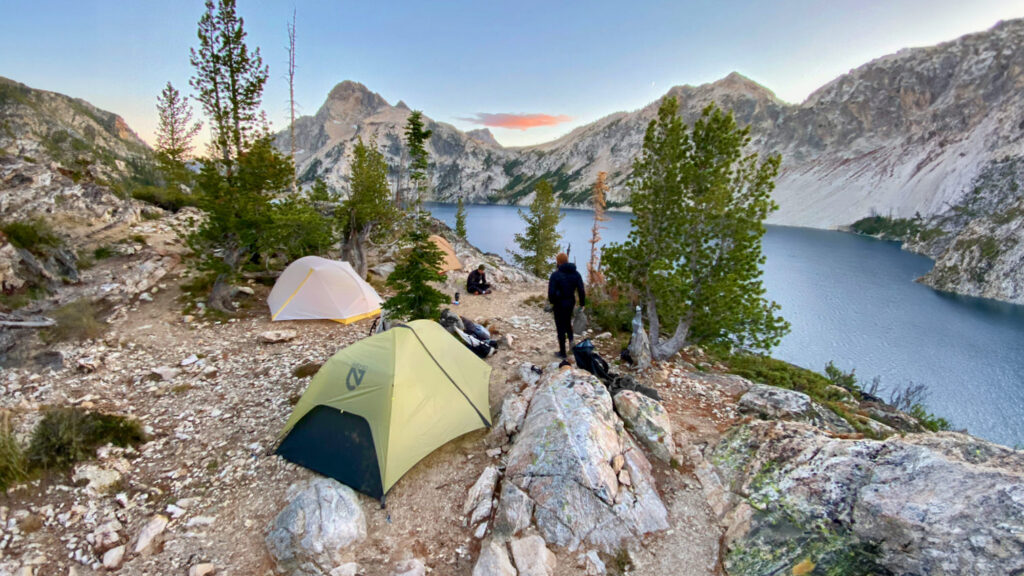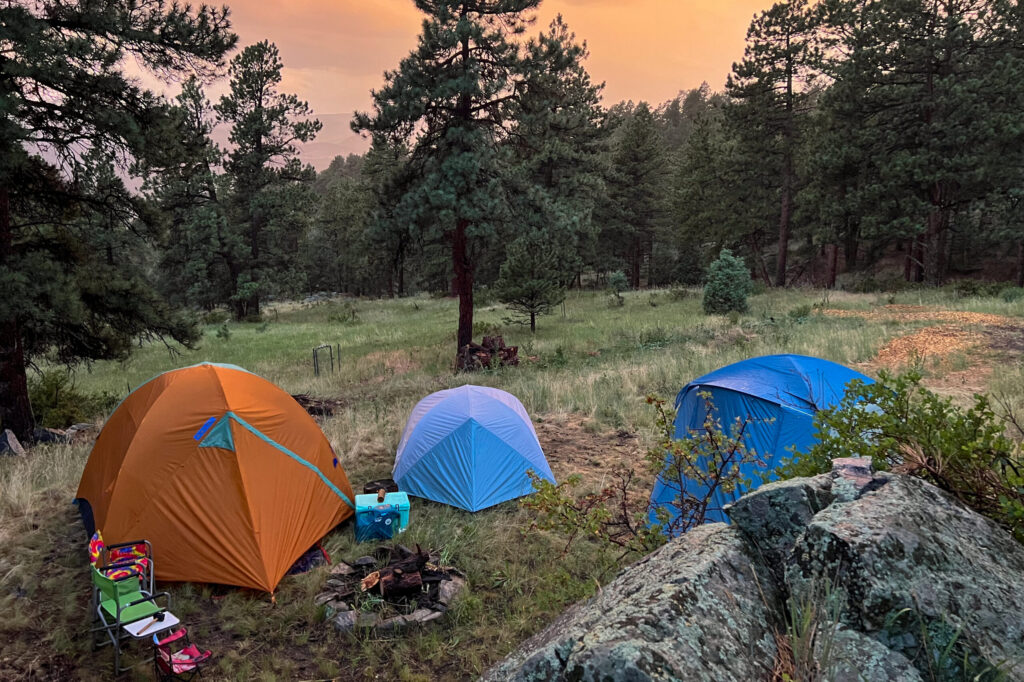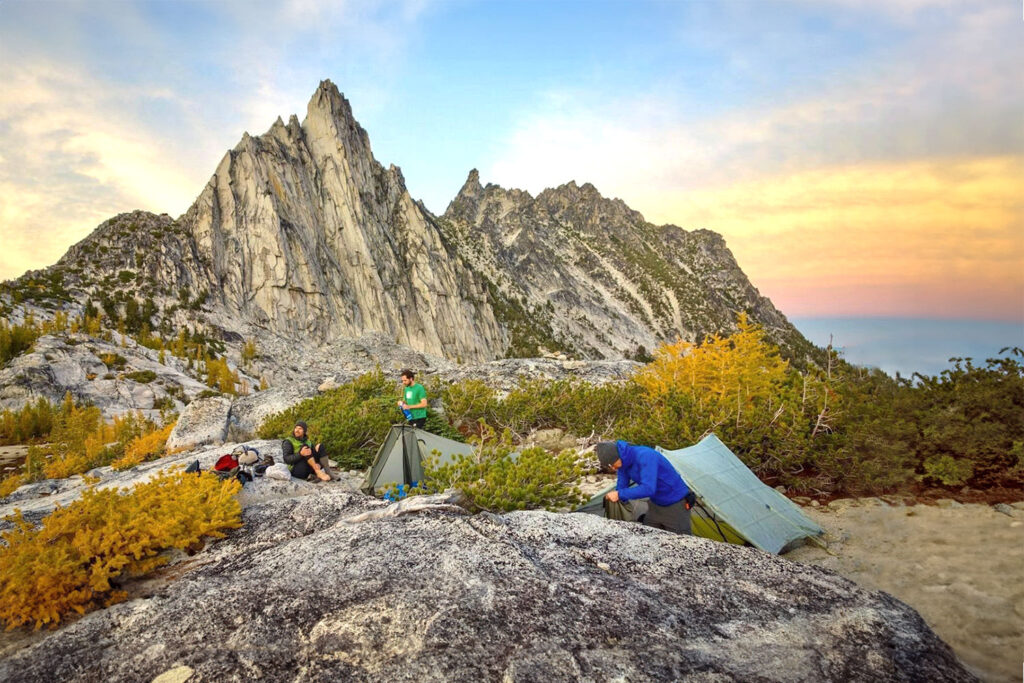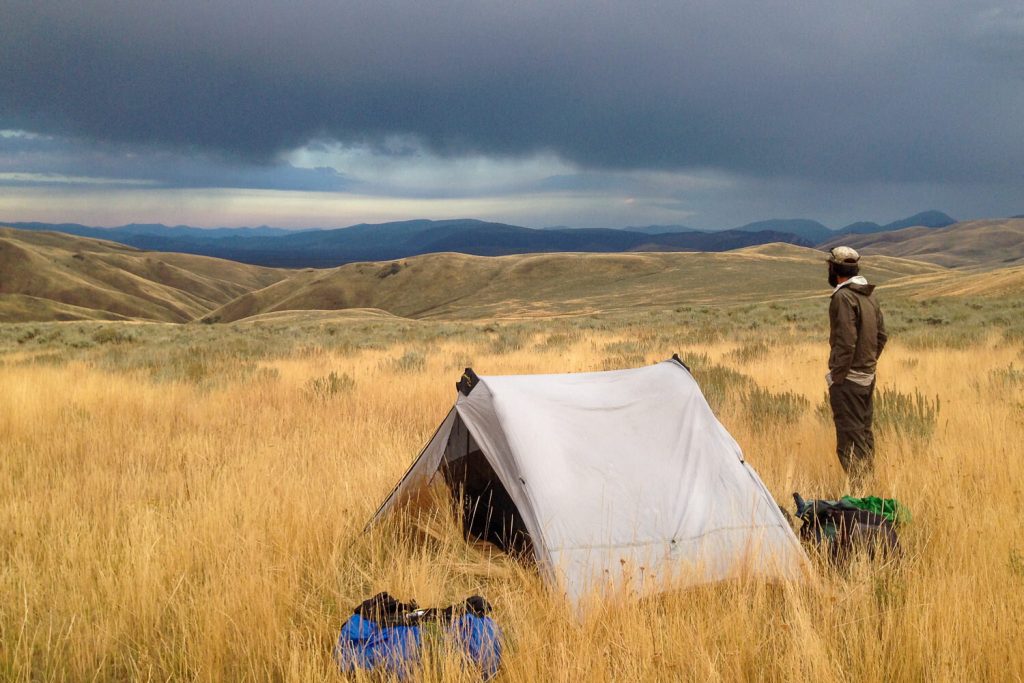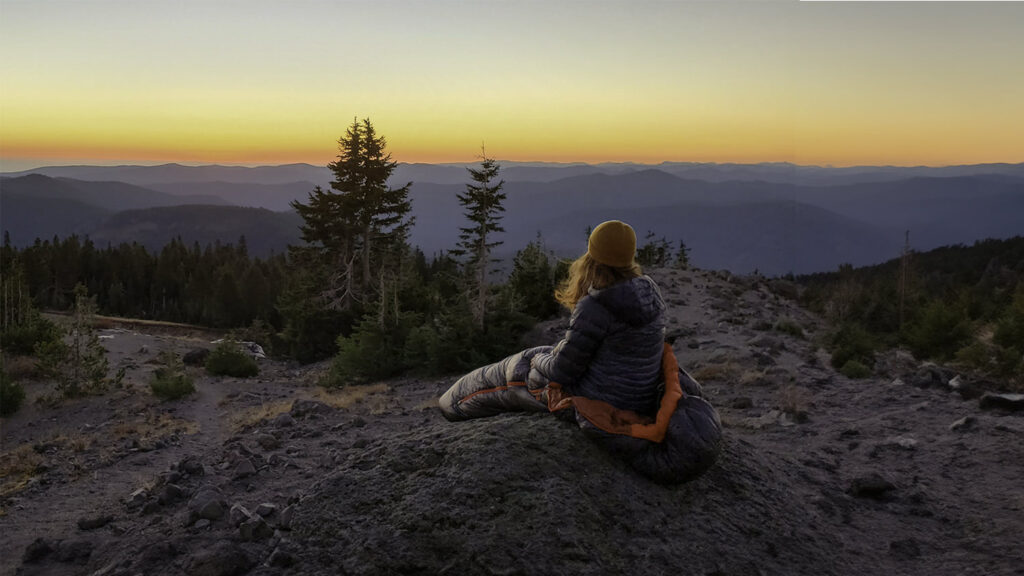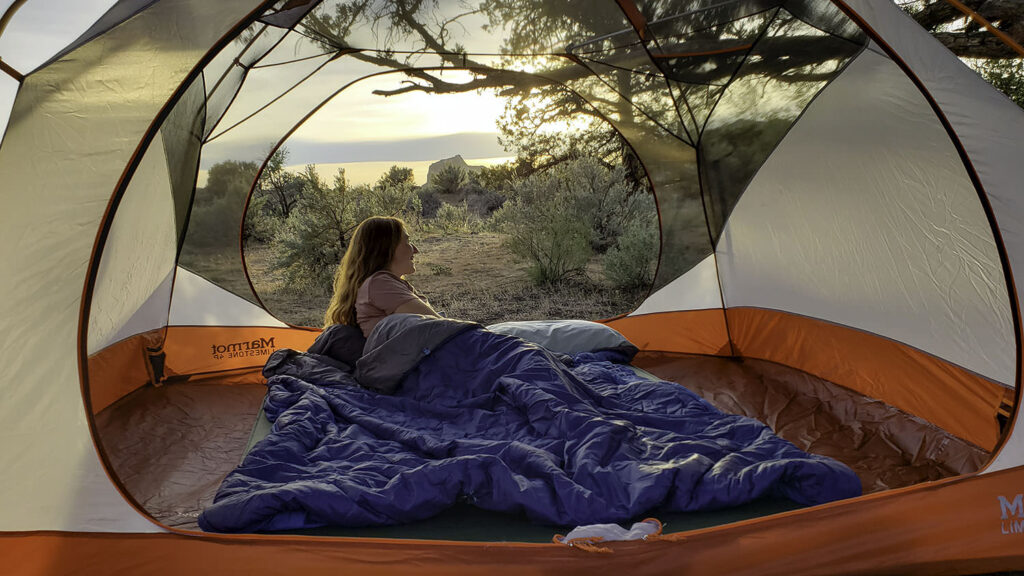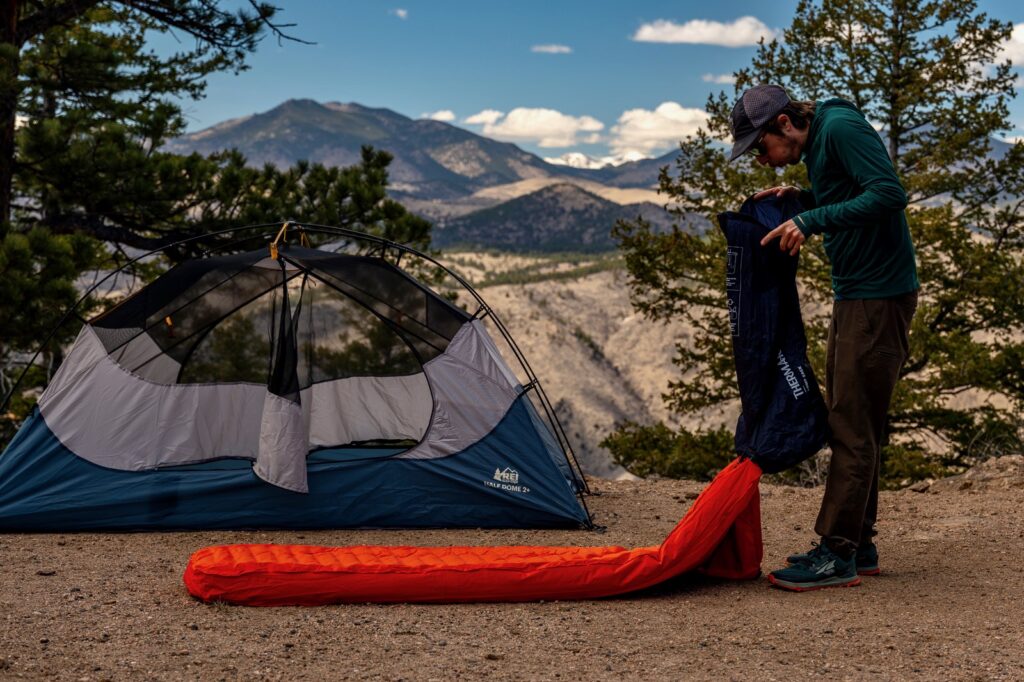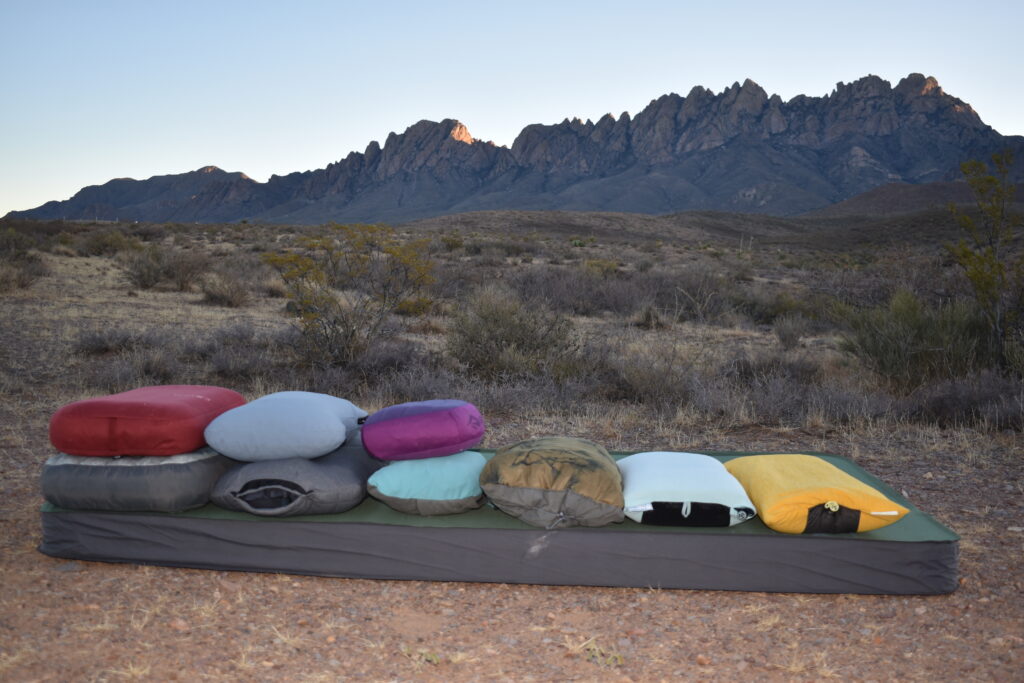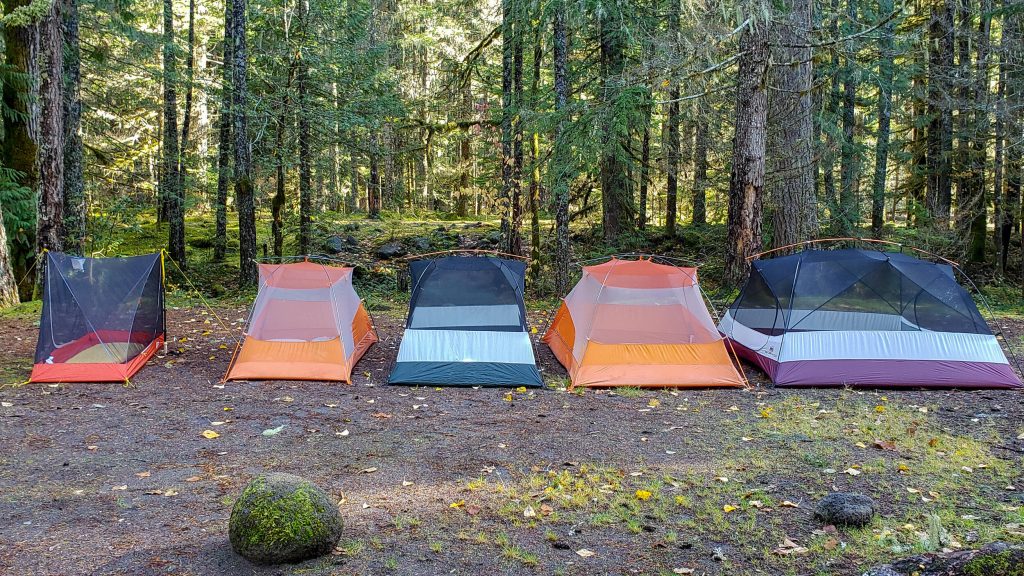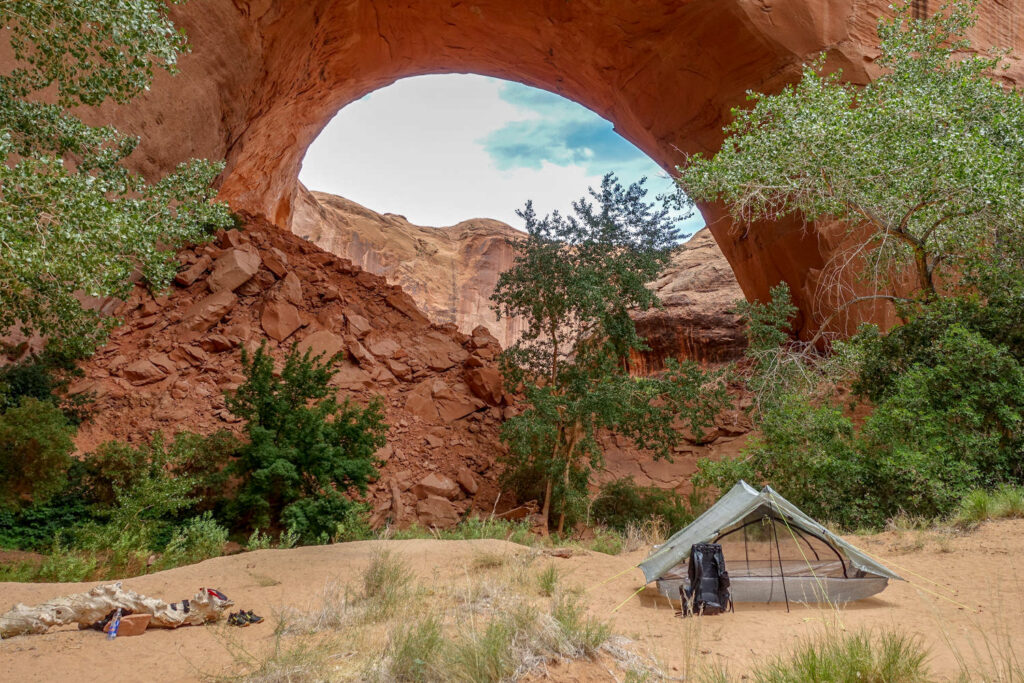
Bottom Line
The Camelbak Crux is user-friendly, affordable, and doesn’t taste like rubber; what more could you want in a hydration bladder? Among all the bladders we tested, the Crux delivers the best drinking experience. Water flows easily through the bite valve, and it tastes superior to nearly all the other bladders with hose systems.
It’s not the most lightweight or packable option; its bulky plastic handle makes it easy to fill but difficult to fold and store when not in use. It also lacks structural features like a rigid back plate. For the most part, we didn’t miss these aspects while hiking with the Crux.
The Camelbak Crux is an excellent choice for backpackers and hikers seeking a functional product who dislike the rubbery taste often found in hydration bladders. Additionally, it is one of the most affordable complete hydration systems, providing great value for your money. For day hikers who enjoy sipping while they walk, check out our favorite hydration bladders with hoses.
And for more info, check out some of our other popular gear guides:
How We Tested
The Camelbak Crux kept us hydrated during big hikes and short walks in the Southern California desert this winter. We hiked with it up the first 4,000 feet of the iconic Cactus to Clouds trail near Palm Springs. We also took it on shorter hikes and climbing days in Joshua Tree National Park. The weather was mostly mild, with temperatures ranging from 40 to 75 degrees.
Quick Specs
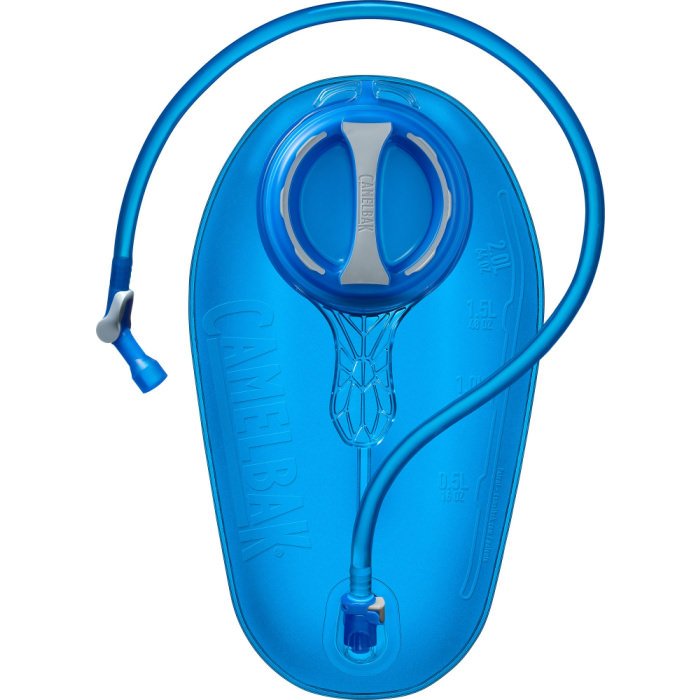
CamelBak Crux
Best value hydration bladder
CleverHiker Rating: 4.5
Price: $40
Weight: 7 oz.
Dimensions: 15″ x 7.5″
Capacities Available: 1.5L, 2L, 3L
Pros
- Water doesn’t taste like plastic
- Water flows easily
- Plastic handle makes it easy to fill
- Affordable price for the features it includes
Cons
- Bulkier and heavier than other options

Weight & Packability
The Crux is not the lightest or most packable bladder available. The CamelBak website states that the 2-liter size weighs 7 ounces. We measured it at approximately 7.8 ounces, which places it on the heavier end of complete hydration systems that include a hose.
The large plastic handle makes the Crux easy to fill from a sink or a stream, but it adds significant bulk. We measured it at 9.75” by 5.5” by 2.5” in its minimum packed size. For backpackers flying to their final destination, a more svelte option like the HydraPak Contour or the Platypus Hoser might be a better choice.
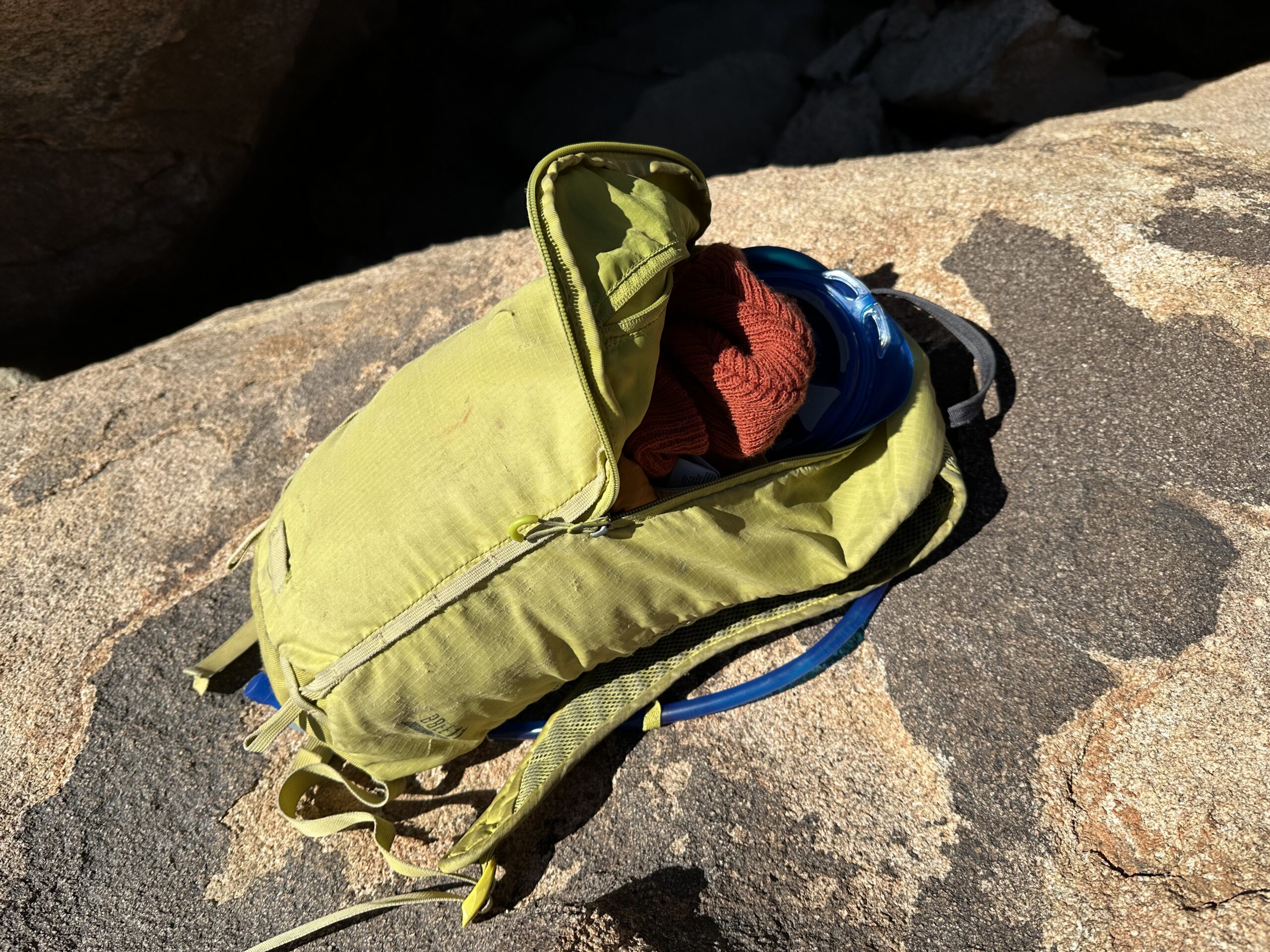
Ease of Use
Our favorite features of the Camelbak Crux are its high flow rate and its great taste. The water flows easily from the bite valve with minimal effort, and it doesn’t have that rubbery flavor found in many other hydration systems. In our flow rate test, the Crux achieved the highest flow of any bladder, filling 1.25 cups in ten seconds when the bite valve was pinched.
The bite valve includes a shutoff switch to prevent leaks, which we found to be quite secure. The large plastic handle makes filling easier, though it sacrifices some packability, as we mentioned earlier. There are limited interior baffles to prevent water from sloshing around, so runners or those engaging in high-impact activities may prefer a different model.

Ease of Cleaning
While the Crux cannot be turned inside out for cleaning and drying, the twist cap opening is large enough to accommodate most hands. Among the bladders we tested with twist caps, this one featured the largest opening, allowing us to scrub the inside of the bladder easily.
Since it can’t be turned inside out, the Crux was one of the slower bladders to dry, like the other twist cap models. It took more than seven hours to completely dry when hung up outside in the desert. This is partly because the bladder is difficult to fully empty; water tends to pool near the twist cap.
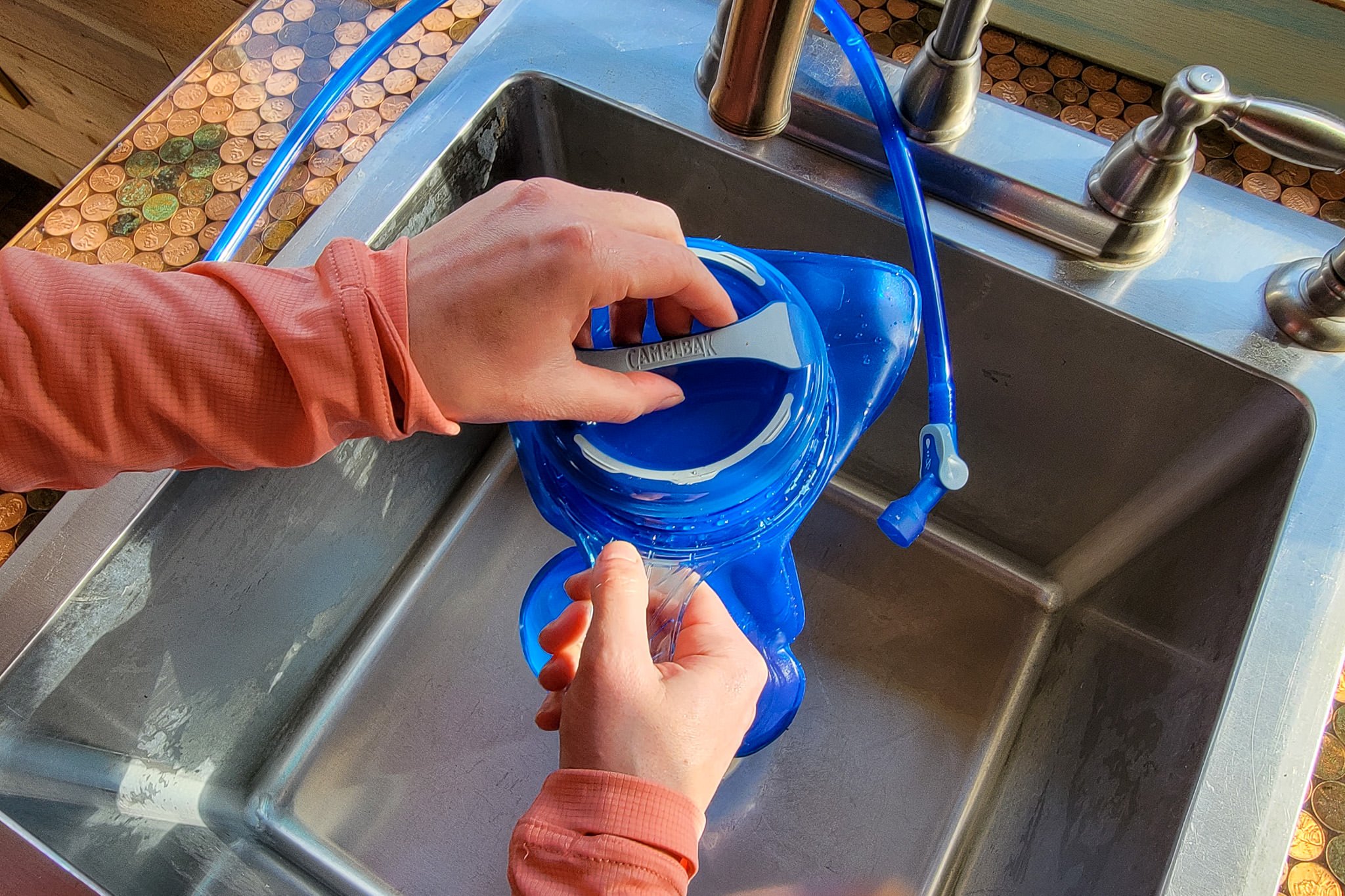
Taste
As mentioned above, the Crux tasted better than most other hydration bladders. After thorough cleaning, it retained only a barely noticeable plastic taste. The only products that tasted better were the Platypus Hoser and Platy. Some of the more expensive bladders, including the Osprey Hydraulics and Gregory 3D Hydro, tasted considerably worse than the Crux.

Durability
Some consumer reviews we read prior to testing mentioned leaks through the threads of the twist cap. So far, we haven’t experienced that, which may be due to user error rather than product issues. After many weeks of hiking and stuffing the Crux into a fully packed backpack, we didn’t notice any leaks.
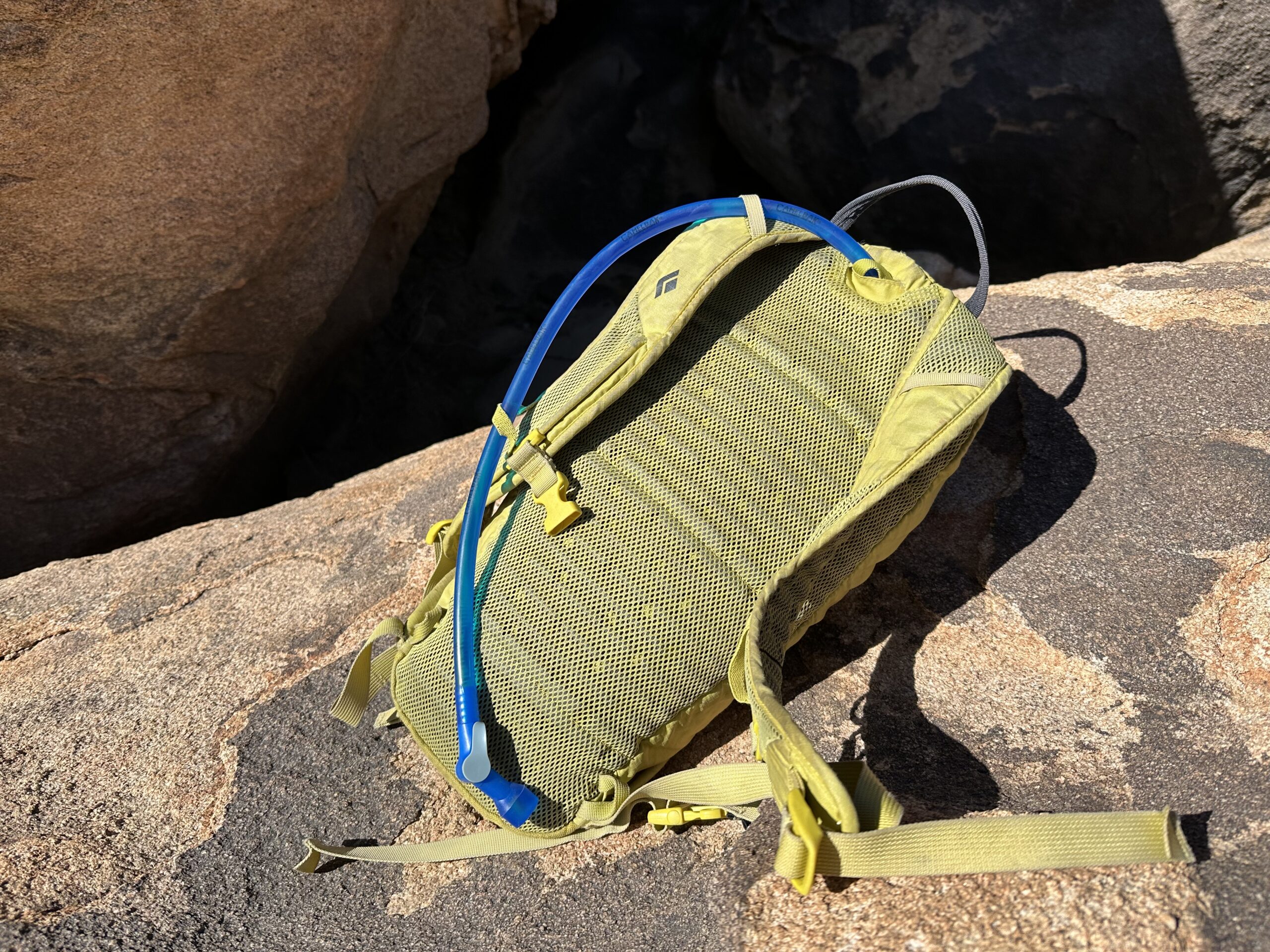
Should You Buy the Camelbak Crux?
The Camelbak Crux is a classic choice for hikers and backpackers looking for a great hydration experience. While it doesn’t offer all the bells and whistles of the slightly more expensive Osprey Hydraulics or Gregory 3D Hydro, we didn’t really miss those features during our testing.
Most importantly, it doesn’t taste like plastic, something that few of the models we tested managed to achieve.
What Other Hydration Bladders Should You Consider?
The Camelbak Crux falls in the middle of the road when it comes to features and weight. Find lighter, more minimalist options as well as bladders with more structure on our list of this season’s best hydration bladders.
Hydrapak Contour Review: If you’re a runner or an ultralight backpacker looking for a more packable option, the Hydrapak Contour may work for you. Without a bulky twist cap, the Contour rolls into a smaller package that fits better in airplane baggage. It’s a few ounces lighter than the Crux, and it also features interior baffles to prevent water from sloshing. For these reasons, trail runners may prefer the Contour over the Crux.
Osprey Hydraulics Reservoir Review: Overnight backpackers looking for a seamless experience may appreciate the added features and thoughtful design of the Osprey Hydraulics Reservoir. With a rigid back plate, it’s easier to load and unload from a fully packed overnight pack. The hose quick disconnect is located on the top of the bladder, which means you won’t have to fish through your gear to reconnect the hose after a refill. The sternum strap magnet holds the hose securely in place during a hike or run. These extra features make it a bit more expensive than the Crux, but they may be worth it to some.


